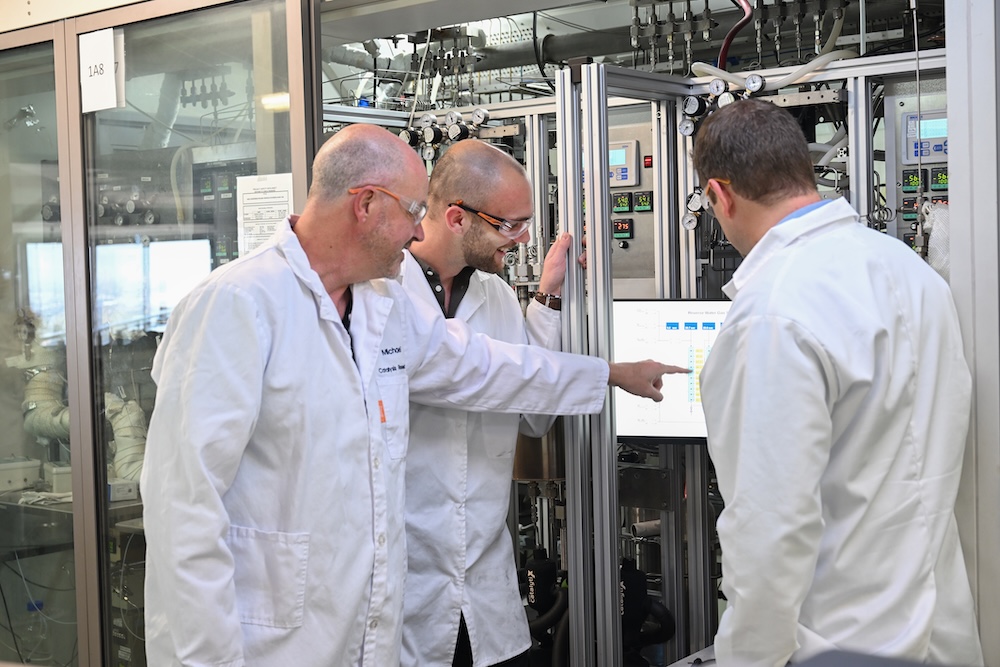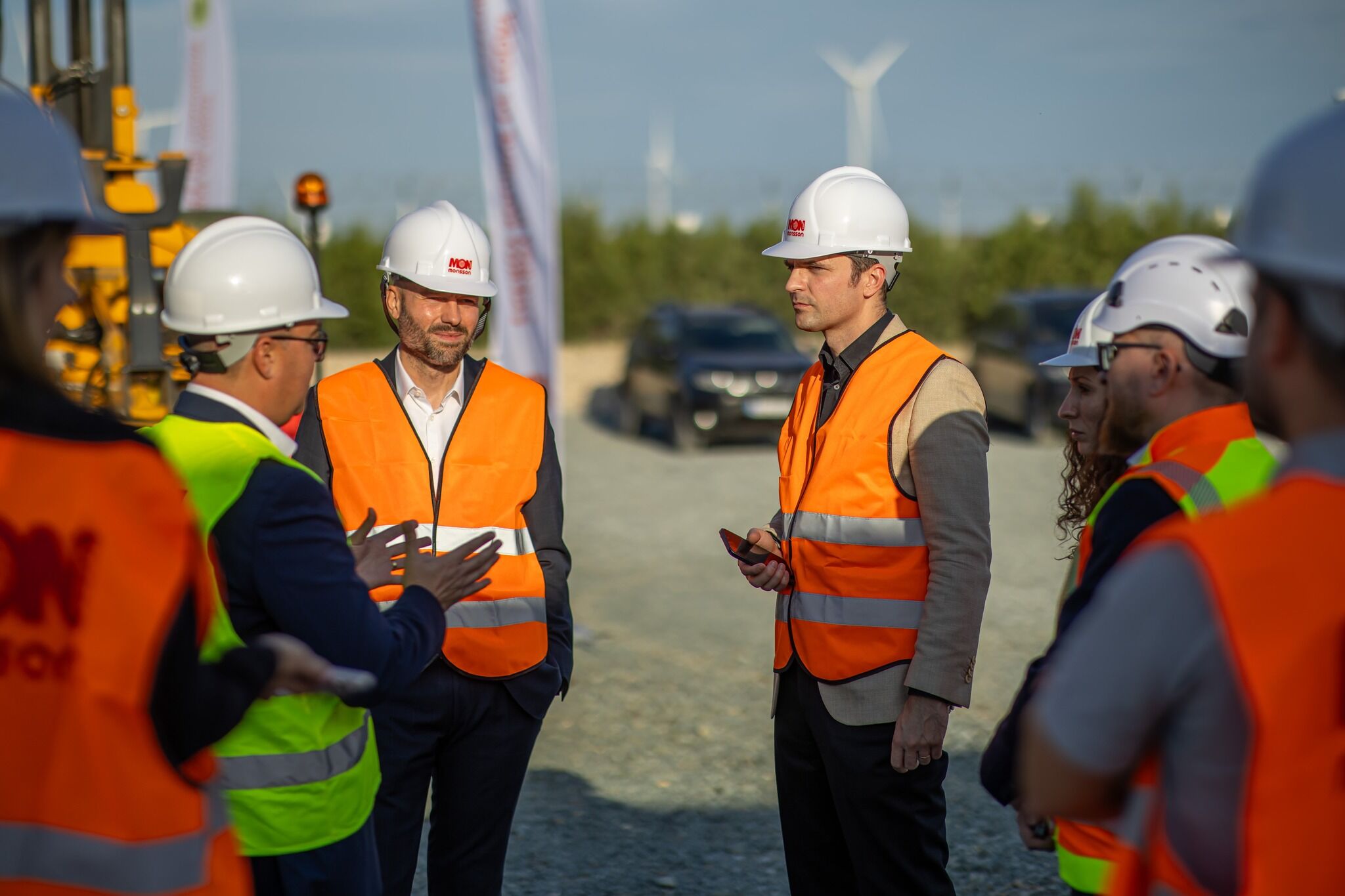Report on Austin Energy’s Battery Storage Initiative and Alignment with Sustainable Development Goals
Executive Summary
On October 23, 2025, Austin Energy announced a significant contractual agreement with Jupiter Power to develop a utility-scale battery storage facility. This project is designed to advance the city’s climate and energy reliability objectives by providing up to 100 megawatts of electricity. The initiative directly supports Austin Energy’s strategic goal of achieving 125 megawatts of battery storage capacity by the end of 2027 and demonstrates a strong commitment to the United Nations Sustainable Development Goals (SDGs).
Project Details and Financial Commitment
- Capacity: Up to 100 megawatts (MW)
- Technology Provider: Jupiter Power
- Contract Term: Up to 20 years
- Estimated Annual Value: $14.4 million
- Total Estimated Value: $288 million
Contribution to Sustainable Development Goals (SDGs)
This initiative makes substantial contributions to several key SDGs, positioning Austin as a leader in sustainable urban energy management.
SDG 7: Affordable and Clean Energy
The project is central to achieving SDG 7 by ensuring access to affordable, reliable, sustainable, and modern energy.
- It facilitates the large-scale integration of renewable energy sources by storing excess power generated during periods of low demand and dispatching it when needed most.
- This function reduces the grid’s reliance on fossil-fuel-based power plants, thereby promoting a cleaner energy mix.
- The initiative directly supports Austin Energy’s target of expanding its portfolio of flexible, dispatchable resources to build a more adaptable and clean grid.
SDG 9: Industry, Innovation, and Infrastructure
The agreement marks a significant investment in resilient infrastructure and promotes sustainable innovation, aligning with the objectives of SDG 9.
- It represents the largest battery storage project in Austin Energy’s history, showcasing a commitment to adopting innovative technologies to modernize the energy grid.
- By enhancing grid flexibility and reliability, the project builds a resilient infrastructure capable of supporting sustainable economic growth and future technological advancements.
SDG 11: Sustainable Cities and Communities
The battery storage facility directly contributes to making Austin a more inclusive, safe, resilient, and sustainable city, in line with SDG 11.
- It improves overall system resilience, particularly during extreme weather events, safeguarding the community’s access to essential power.
- The project is a core component of the Austin Energy Resource, Generation and Climate Protection Plan to 2035, which aims to balance reliability, affordability, and environmental sustainability for the community.
SDG 13: Climate Action
This initiative is a decisive step in taking urgent action to combat climate change and its impacts, as called for by SDG 13.
- By enabling greater utilization of renewable energy, the project directly reduces greenhouse gas emissions.
- It strengthens the city’s capacity to adapt to climate-related hazards by creating a more stable and reliable energy supply.
Strategic Objectives and Outlook
The project is guided by a clear set of strategic objectives that reinforce Austin’s commitment to a sustainable energy future.
- Enhance Grid Reliability: To improve the stability of the electrical grid by providing a dispatchable power source that can respond rapidly to fluctuations in supply and demand.
- Accelerate Renewable Energy Integration: To overcome the intermittency challenges of renewable sources like solar and wind, thereby supporting their continued expansion.
- Meet Climate Protection Goals: To advance the targets outlined in the city’s climate protection plan by investing in technologies that reduce carbon emissions.
- Strengthen Community Resilience: To ensure a reliable power supply for the Austin community, reinforcing the foundations for sustainable resource planning and energy equity.
Analysis of Sustainable Development Goals (SDGs) in the Article
1. Which SDGs are addressed or connected to the issues highlighted in the article?
- SDG 7: Affordable and Clean Energy
- SDG 9: Industry, Innovation and Infrastructure
- SDG 11: Sustainable Cities and Communities
- SDG 13: Climate Action
2. What specific targets under those SDGs can be identified based on the article’s content?
-
SDG 7: Affordable and Clean Energy
- Target 7.2: By 2030, increase substantially the share of renewable energy in the global energy mix. The article explains that battery storage “helps balance the integration of renewable energy sources” and “supports renewables,” which is essential for increasing their share in the energy grid.
- Target 7.a: By 2030, enhance international cooperation to facilitate access to clean energy research and technology… and promote investment in energy infrastructure and clean energy technology. The project is described as a “large-scale battery storage contract” and a “significant investment in innovation,” directly reflecting investment in clean energy technology and infrastructure.
-
SDG 9: Industry, Innovation and Infrastructure
- Target 9.1: Develop quality, reliable, sustainable and resilient infrastructure… to support economic development and human well-being. The article repeatedly emphasizes that the project “boosts our grid,” strengthens “reliability,” improves “overall system resilience,” and is an “investment in infrastructure.”
- Target 9.4: By 2030, upgrade infrastructure and retrofit industries to make them sustainable, with increased resource-use efficiency and greater adoption of clean and environmentally sound technologies. The battery storage initiative is a clear example of upgrading energy infrastructure with a “clean energy future” in mind, using an “emerging technology” to make the grid more sustainable and adaptable.
-
SDG 11: Sustainable Cities and Communities
- Target 11.b: By 2020, substantially increase the number of cities and human settlements adopting and implementing integrated policies and plans towards… mitigation and adaptation to climate change, disaster risk reduction. The article states the project is part of “Austin Energy’s Resource, Generation and Climate Protection Plan to 2035,” which is a city-level integrated plan aimed at achieving a “clean energy future” and advancing “Austin’s climate goals.”
-
SDG 13: Climate Action
- Target 13.1: Strengthen resilience and adaptive capacity to climate-related hazards and natural disasters in all countries. The article directly mentions that the project “improves overall system resilience during extreme weather events,” which is a key aspect of adapting to climate-related hazards.
- Target 13.2: Integrate climate change measures into national policies, strategies and planning. The project is a tangible outcome of Austin’s local climate strategy, the “Resource, Generation and Climate Protection Plan to 2035,” demonstrating the integration of climate goals into municipal energy planning.
3. Are there any indicators mentioned or implied in the article that can be used to measure progress towards the identified targets?
-
For SDG 7 (Affordable and Clean Energy)
- Indicator for Target 7.2: The installed capacity of battery storage to support renewables. The article provides specific figures: “100 megawatts of electricity from a utility-scale battery storage facility” and a city-wide goal of “125 megawatts of battery storage by the end of 2027.” These numbers directly measure the capacity being added to enable a higher share of renewable energy.
-
For SDG 9 (Industry, Innovation and Infrastructure)
- Indicator for Target 9.1: Total investment in new and resilient energy infrastructure. The article quantifies the investment, stating the agreement is “valued at an estimated $14.4 million per year… for a total estimated amount of $288 million.” This financial figure serves as a direct indicator of the commitment to developing resilient infrastructure.
-
For SDG 11 (Sustainable Cities and Communities)
- Indicator for Target 11.b: The existence and implementation of a local climate action plan. The article explicitly names the “Austin Energy’s Resource, Generation and Climate Protection Plan to 2035” as the guiding policy for this project, indicating that the city has an integrated plan and is actively implementing it.
-
For SDG 13 (Climate Action)
- Indicator for Target 13.1: The implementation of strategies for climate resilience. The project itself, specifically the addition of “100 megawatts” of battery storage to improve “system resilience during extreme weather events,” is a concrete and measurable action that demonstrates the implementation of a climate adaptation strategy.
4. Table of SDGs, Targets, and Indicators
| SDGs | Targets | Indicators |
|---|---|---|
| SDG 7: Affordable and Clean Energy | 7.2: Increase substantially the share of renewable energy in the global energy mix. | Installed capacity of battery storage (100 MW from the project, with a goal of 125 MW by 2027). |
| SDG 9: Industry, Innovation and Infrastructure | 9.1: Develop quality, reliable, sustainable and resilient infrastructure. | Total investment in new energy infrastructure (estimated at $288 million over 20 years). |
| SDG 11: Sustainable Cities and Communities | 11.b: Increase the number of cities adopting and implementing integrated policies and plans towards climate change mitigation and adaptation. | Existence and implementation of a local climate action plan (“Austin Energy’s Resource, Generation and Climate Protection Plan to 2035”). |
| SDG 13: Climate Action | 13.1: Strengthen resilience and adaptive capacity to climate-related hazards. | Implementation of strategies for climate resilience (addition of 100 MW of battery storage to improve grid resilience during extreme weather). |
Source: austinenergy.com






